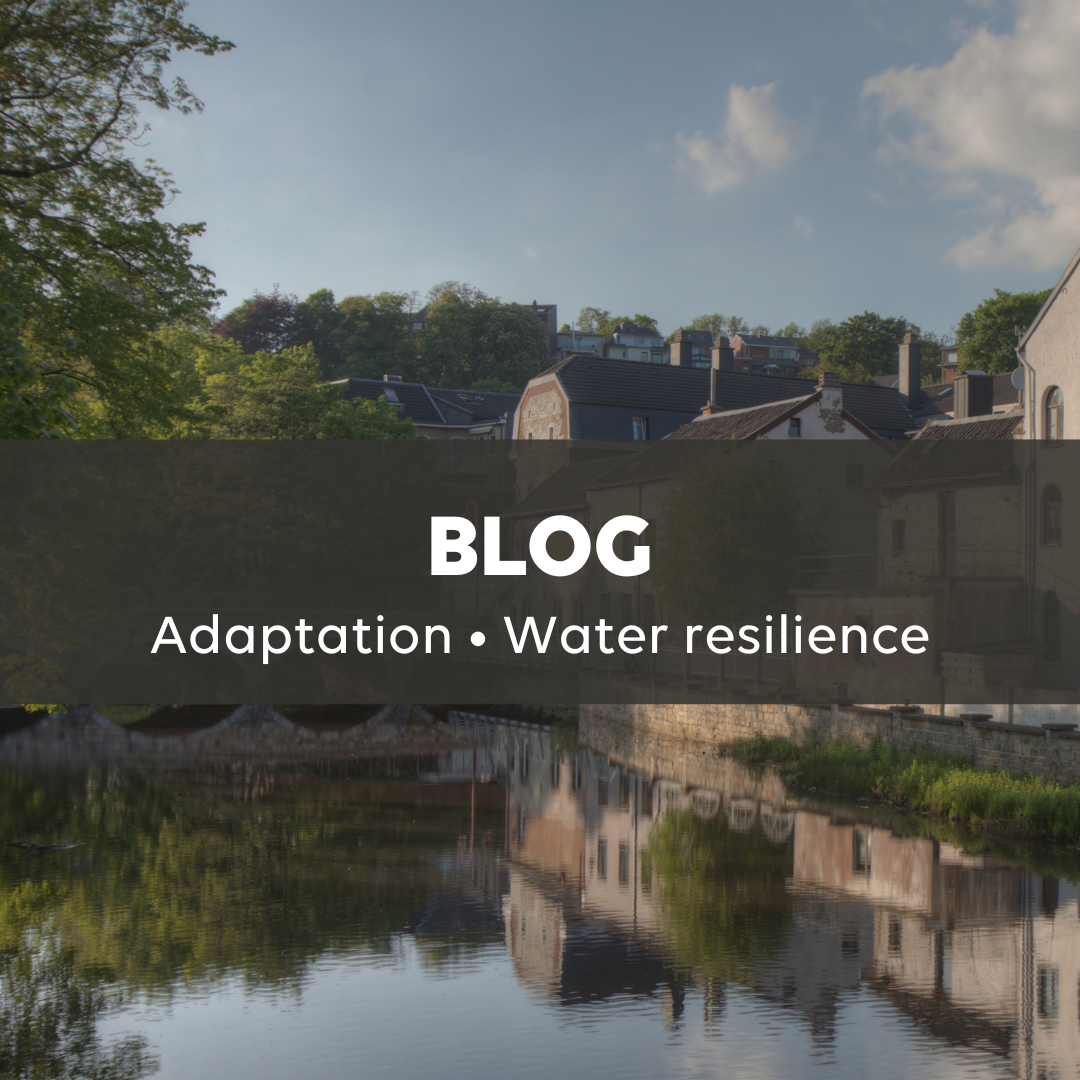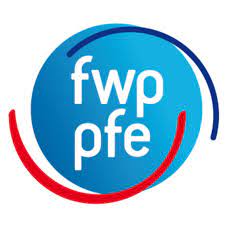Water resilience and climate adaptation in European cities
[July 2024] How are the different dimensions of water issues taken into account in urban planning? What role can Nature-based Solutions play? This note sets out the issues at stake and the solutions currently being deployed.

Author: Joffrey Lapilus, Water and Climate Programme Officer, French Water Partnership
Date: July 2024
Summary:
- Making cities more resilient to major water-related hazards
- Promoting equitable access to urban water and sanitation services
- Urban water: a potential for mitigation
- Governance and citizen involvement, the keys to combating climate change in cities
- Key recommendations by French water actors to meet these challenges

About the French Water Partnership
The French Water Partnership is the reference platform for French public and private water stakeholders active on the international stage.
Its 200 members are divided into 6 colleges representative of the French water stakholders: the French government and public institutions, NGOs, associations and foundations, local authorities and parliamentarians, economic actors, research and training institutes, as well as individual experts. For over 15 years, it has been lobbying at international level to make water a priority in sustainable development policies and to promote French know-how.
Analysis note for the Climate Chance Observatory
By 2050, nearly 70% of the world’s population will be living in cities, according to the United Nations.[1] This urbanization phenomenon, which is relatively balanced between large, medium-sized and small towns, is set to increase mainly in developing and emerging economies, as Northern countries have already completed their urban transition.
Pressure on water resources and water-related risks are significant in these dense urban areas and exacerbated by climate change. If we are to achieve SDG 11 (Make cities inclusive, safe, resilient and sustainable), we need to take all aspects of water into account.
The IPCC notes that the effects of the combined risks of warming and precipitation have become more frequent. It identifies four major risks for Europe: heat-related mortality, morbidity and ecosystem changes; heat stress and drought on crops; water scarcity; flooding and sea-level rise.[2]
In this context, international negotiating frameworks such as the Paris Agreement and the 2030 Agenda set ambitious targets for equitable and universal access to water and sanitation services, as well as the management of major water-related risks in cities. While many cities have already adopted adaptation and mitigation strategies, urban decision-makers must continue to take concrete action to address the water-related challenges they face.
Making cities more resilient to major water-related hazards
Due to their morphology, the density of population and infrastructure on their territories, cities are particularly vulnerable to water-related climate risks (floods, droughts, rising sea levels, hurricanes, etc.). In Europe, artificialised or sealed land has increased by 6% since 2000, while more than a quarter of urban areas have recorded an increase of more than 10% in the population living in flood-prone areas between 2011 and 2021.[3] Added to this is the unequal distribution of these risks between different socio-economic groups, which increases the vulnerability of certain populations.[4]
In this context, it is necessary to rethink urban development and planning in order to reduce the vulnerability of cities by repositioning the consideration of urban development in relation to the occupation of their catchment area (suburbs, upstream rural and natural environments) and its internal construction rules. The very strong demographic growth in certain areas calls for informal development to be integrated into the urban fabric. In the case of flooding, for example, several European countries (Slovakia, Ireland, Poland, etc.) have introduced municipal flood plans under the European Directive on Flooding[5], which underlines the importance of integrating spatial planning and land use in flood risk management. In addition, Urban Climate-Energy Plans must include a chapter on water, which is generally not the case today.
The development of « sponge cities », in which the absorption and runoff of rainwater is encouraged through limiting soil sealing, a good balance between grey infrastructure and Nature-based Solutions (NbS), the development of new green spaces and green roofs, and other plot-level developments to limit or slow runoff during rainy episodes, are all to be encouraged. These green infrastructures also generate co-benefits for the quality of life in the city, such as the fight against heat islands.
An EEA study carried out in 2024 showed that 91% of local climate action plans in Europe include nature-based solutions, such as maintaining, reforesting or planting vegetation to reduce heat and regulate water. Blue options’ are also on the increase, involving the creation or restoration of blue infrastructure such as retention basins, water buffers, urban drainage, etc., as well as better management of natural and semi-natural areas such as wetlands and floodplains. This is the case in cities such as Copenhagen, Gothenburg, Oslo, Budapest[6]and even smaller towns such as Eupen. Worldwide, an analysis of 582 empirical studies showed that sustainable urban drainage systems were the most important NbS. The results also show that governance, urban policy and planning, blue-green urban infrastructure, forestry, water resources and management, land use planning and disaster management are the key sectors that can effectively plan and implement NbS.[7]
Promoting equitable access to urban water and sanitation services
In a context of rapid urbanization, where water resources are increasingly at risk, water must be affordable, and its associated services equitably provided to citizens.
We need to pay close attention to strengthening the services provided to deprived populations, in line with SDG11, but also to the robustness of services threatened by climate hazards (droughts, deterioration in water quality, salinization of water in coastal areas), particularly for the most disadvantaged populations (informal settlement systems in many towns and rural areas), who will be particularly sensitive to the risks of service disruption, especially to the supply of clean water.
Numerous solutions for reducing water consumption (improving service efficiency, in particular reducing network leakage, raising user awareness, etc.) or increasing the quantities of water available (rainwater harvesting, wastewater reuse, etc.) are available and need to be developed within the more general framework of integrated management at basin level for sustainable resource allocation and protection of surface water as well as groundwater.
In many urban contexts, colossal investments and questions about the sustainability of the resource mean that we need to think outside the traditional framework of a single centralized network. Faced with the diversity of formal and informal settlements, and in keeping with the principles of equity and equalization across a conurbation, alternatives – sometimes emanating from the populations themselves – need to be considered to improve accessibility to services for all throughout the territory, and particularly for the most modest households. This is especially true in developing countries, but could also apply to certain European contexts, requiring a flexible and adaptive legislation.
In addition, stakeholders will need to mobilize to design a « smart », more decentralized city, promoting powerful, efficient synergies between essential urban services: water, sanitation, waste and energy management.
Urban water: a potential for mitigation
As the Liège Declaration states, mitigation and adaptation are deeply entwined, with mitigating climate change being more important than ever to be able to stay within limits of adaptation. With a view to developing carbon-neutral cities, all water and wastewater operators can take simple steps to improve their energy efficiency, for example by upgrading equipment with more efficient systems.
Circular economy logic also offers significant opportunities, particularly in terms of financial and human benefits. The recovery potential of urban wastewater (e.g. the nutrients transported by wastewater, carbon, nitrogen and phosphorus) is a resource that is still under-exploited. With the production of energy, wastewater treatment offers real prospects for energy autonomy and an effective contribution to reducing a region’s greenhouse gas emissions.
Governance and citizen involvement, the keys to combating climate change in cities
Behavioral change, the participation and training of all key players, and the improvement of regulatory frameworks (urban adaptation and mitigation plans) extended to watersheds and social acceptability are central steps in adapting to climate change in cities. The condition of this openness and culture of dialogue is information sharing, a commitment to transparency and international cooperation between cities.
Territorial planning must also take account of local realities at the three levels of development (small, medium-sized and large cities). The very strong demographic growth of certain areas calls for the integration of informal development into the urban fabric. In addition, Urban Climate-Energy Plans must include a chapter on water, which is generally not the case today.
Mobilizing financial resources is a major challenge for cities in their efforts to fight against climate change. Local authorities are partly responsible for social, economic and environmental investments in their areas, which sometimes account for between 50 and 60% of public investments. However, in many developing countries for instance, they have very little capacity to develop or finance long-term actions.
Strengthening their financial health and management capacity must therefore go hand in hand with the mobilization of long-term financing, based on the 3T principle (taxes, tariffs, transfers).
Key recommendations by French water actors to meet these challenges
1) Local and regional authorities must become the driving force behind democratic urban governance: Local and regional authorities must be recognized and strengthened to implement sustainable and coherent local development strategies, particularly in terms of resource management and access to basic services. This means transferring competencies and resources, creating a local tax system and setting up institutional frameworks encouraging partnerships.
2) Strategic urban planning must foster better integration of services: French players have a vision of urban development based on the search for a balance between the objectives of a productive city, an inclusive city and environmental preservation, corresponding to the three components of sustainable development. Tomorrow’s cities and regions will increasingly rely on short supply chains, combining local resources and needs. Synergies exist between water, sanitation, waste and energy services, which can be developed within a framework that favors the circular economy.
3) A change of scale in the financing of sustainable infrastructures is needed: the proportion of vulnerable households in urban areas is constantly growing. To guarantee the fairness of services, solidarity mechanisms must be placed at the heart of pricing policies. More generally, financing these services cannot be the sole responsibility of users. Additional funding (subsidies, solidarity, land value gains, etc.) is needed to finance infrastructure. What’s more, if the technologies exist to deliver environmentally and socially efficient services that include the participation of the various users, their financing must move from a project-based dynamic to the establishment of structural, long-term funds.
References
[1] UN Habitat (2022). World Cities Report 2022: Envisaging the Future of Cities. UN Habitat.
[2] Pörtner, H.-O. et al. (2022). Climate Change 2022: Impacts, Adaptation and Vulnerability. Contribution of Working Group II to the Sixth Assessment Report of the Intergovernmental Panel on Climate Change. Cambridge University Press.
[3] EEA (2024). Urban adaptation in Europe: what works?. EEA Report 14/2023. European Environment Agency.
[4] Beyler, P., Seigneurin, F. & Thomas, T.M. (2024). Résilience juste : Intégrer la justice sociale et le genre dans l’adaptation au changement climatique en Europe. Climate Chance.
[5] Directive 2007/60/CE du Parlement Européen et du Conseil du 23 octobre 2007 relative à l’évaluation et à la gestion des risques d’inondation.
[6] EEA (2024). Urban adaptation in Europe…, op.cit.
[7] Aghaloo, K. et al (2024). How nature-based solutions can enhance urban resilience to flooding and climate change and provide other co-benefits: A systematic review and taxonomy. Urban Forestry & Urban Greening, 95.



